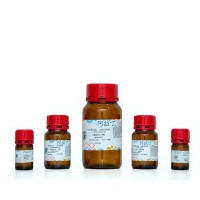Measuring DNA Demethylase Activity In Vitro
互联网
573
The reaction catalyzing direct demethylation of DNA involves the removal of a methyl group residue from the 5′ position on cytosine; the products of the reaction are nonmethylated cytosine in the dinucleotide CpG and methanol (1 ). The study of the proteins involved in demethylation requires an assay for measuring enzymatic DNA demethylation. A number of assays were previously described for determining the state of methylation of CpG sequences DNA. For example, certain restriction enzymes such as Hpa II or Hha I recognize subsets of CpG sequences only when the C is not methylated; thus, cleavage by this enzymes indicates demethylation of their recognition sequences (2 ) This assay is, however, obviously indirect and can only measure the state of methylation of a subset of CG sequences contained in the enzyme-specific recognition site. An additional problem is that this assay does not differentiate between DNA that is directly demethylated, and repair processes that remove methylated cytosines in DNA and replace them with other unmethylated cytosines found in the extracts. An additional assay is the bisulfite-mapping method, which can determine the state of methylation of cytosines at a single nucleotide resolution (3 ). This assay is based on the fact that nonmethylated cytosines are modified by bisulfite and converted to thymidine, whereas methylated cytosines are protected. This assay, similar to the restriction enzyme-based assays, is indirect; it does not measure demethylation but rather the conversion of cytosines.








